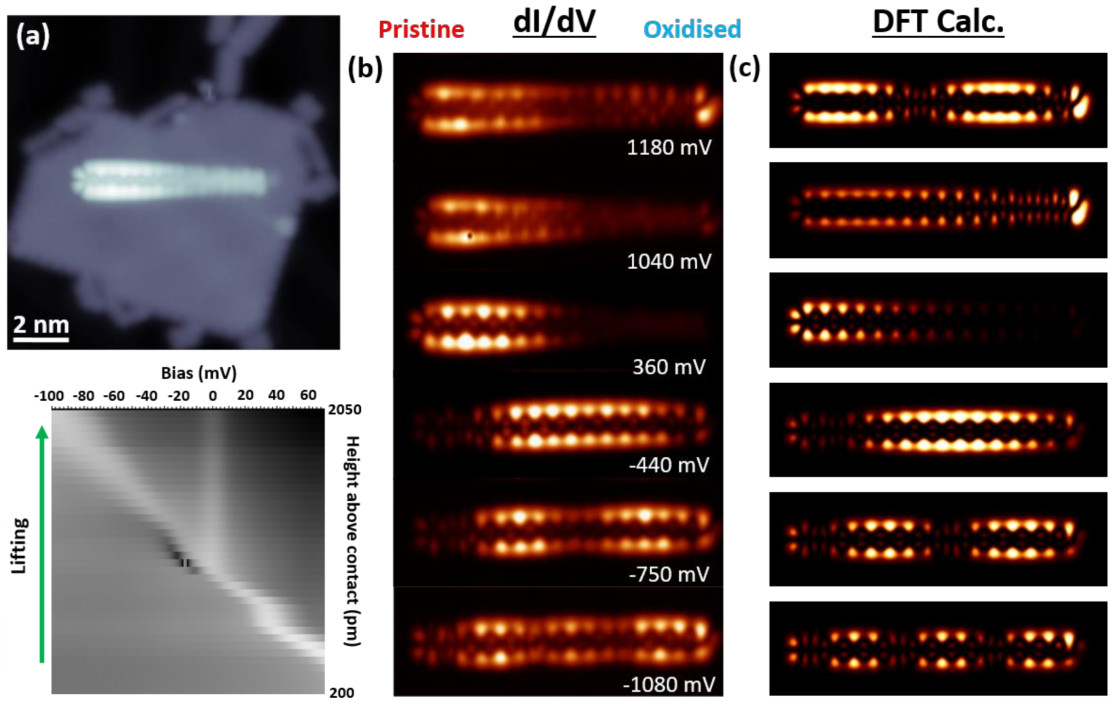Probing the Magnetism of Topological End-States in 5-Armchair Graphene Nanoribbons
ACS Nano - 2020
James Lawrence*, Pedro Brandimarte*, Alejandro Berdonces-Layunta, Mohammed S. G. Mohammed, Abhishek Grewal, Christopher C. Leon, Daniel Sánchez-Portal, and Dimas G. de Oteyza* J.L. and P.B. contributed equally

Abstract
We extensively characterize the electronic structure of ultra-narrow graphene nanoribbons (GNRs) with armchair edges and zig-zag termini that have 5 carbon atoms across their width (5-AGNRs), as synthesised on Au(111). Scanning tunnelling spectroscopy measurements on the ribbons, recorded on both the metallic substrate and a decoupling NaCl layer, show well-defined dispersive bands and in-gap states. In combination with theoretical calculations, we show how these in-gap states are topological in nature and localised at the zig-zag termini of the nanoribbons. Besides rationalising the driving force behind the topological class selection of 5-AGNRs, we also uncover the length-dependent behaviour of these end states which transition from singly occupied spin-split states to a closed-shell form as the ribbons become shorter. Finally, we demonstrate the magnetic character of the end states via transport experiments in a model two-terminal device structure in which the ribbons are suspended between the scanning probe and the substrate that both act as leads.
Press release
Bibtex citation
@Article{Lawrence2020,
author = {James Lawrence and Pedro Brandimarte and Alejandro Berdonces-Layunta and Mohammed S. G. Mohammed and Abhishek Grewal and Christopher C. Leon and Daniel Sánchez-Portall and Dimas G. de Oteyza},
title = {Probing the Magnetism of Topological End-States in 5-Armchair Graphene Nanoribbons},
journal = {ACS Nano},
year = {2020},
volume = {14},
number = {4},
pages = {4499--4508},
issn = {1936--0851},
doi = {10.1021/acsnano.9b10191},
publisher = {American Chemical Society ({ACS})},
}
Key words
- graphene nanoribbons
- topology
- magnetism
- edge-states
- on-surface synthesis
- scanning tunnelling microscopy
- density functional theory